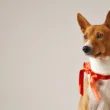Here are some tips for how to teach a dog no. Repeat “no” as often as possible. A dog quickly learns to ignore this command after many attempts. Instead, focus on using the Positive Interrupter (PI), Consistency, and Timeouts. Each one will help you achieve your goal. If you are having trouble training your dog, consider consulting an expert. You can find more information on the internet and ask a local dog trainer for help.
Positive interrupter
Using a positive interrupter to teach a dog no can be a great tool for training. A simple distraction, such as a treat or kiss, will make the dog stop what they’re doing and focus on a different activity. Positive interrupters are also helpful in situations when a dog is nervous or concerned about something. Using a positive interrupter to distract your dog before they begin an unwanted behavior is a great way to establish positive associations.
The use of a positive interrupter is a good way to redirect your dog’s rambunctious play. You can use this instead of a negative correction if your dog is acting up or showing signs of aggression. As long as you follow through with management or separation, your dog will be more likely to stop the behavior in its tracks. You may also wish to consider the services of a force-free dog trainer to teach your dog new behaviors. These professionals will apply science-based techniques to solve your dog’s behavioral problems.
Repetition
Repeating a command over again is an essential part of training a dog, but it can be challenging with some breeds. This is due to the fact that dogs’ ears are four times as sensitive as ours and they may associate a repeated command with a negative emotion, such as fear or anger. Instead of punishing the dog for misbehaving, you should reward the dog for choosing acceptable behavior.
Repeating a command over will solidify the command in a dog’s mind. Dogs learn best through repetition, so it’s important to make the process fun. Aim for around two minutes of training a dog per day. Once the dog has grasped the concept, increase the number of repetitions. When the dog reaches three or more repetitions, it’s time to raise the bar and move onto the next command.
Consistency
When training a dog, consistency is essential. Dogs learn new behaviors slowly, so being consistent with your training is the best way to ensure your puppy gets the message. Inconsistency can lead to the dog sulking or acting out outside of class. Consistency is essential to fixing this problem, and it will last only as long as you’re consistent. You don’t have to be an expert to make it work!
Being consistent when teaching a dog no is vital. Using the same command every time your dog jumps on the couch or walks on the carpet is crucial to making it stick. When your dog does this, redirect him to a different area or position, such as a “down” or a “stay,” and then praise him for the behavior. If you can’t be consistent, your dog will eventually learn to associate the word “no” with the behavior and begin to associate it with a negative experience.
Timeouts
Dogs learn by repetition and consistency. Consecutive punishment is more effective than a short timeout because dogs tend to live in the moment. The dog will not understand that timeouts have a purpose if the punishment lasts for longer than necessary. This will also lead to your dog’s failure to form any associations with the timeout. Here are some ways to teach a dog no using timeouts:
The first method is to place your dog in a TO space and wait for him to finish. You should release your dog every few seconds and repeat the command “time out.” Even if your dog doesn’t show any signs of respect towards timeouts, try repeatedly to place him in one. Repeat the command every few seconds until he understands. If you don’t see results in the first attempt, you can use a drag-line.
Similar Posts:






